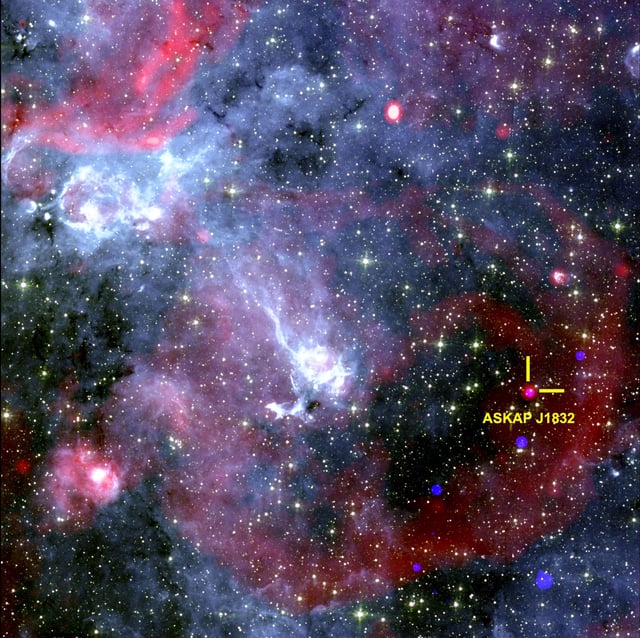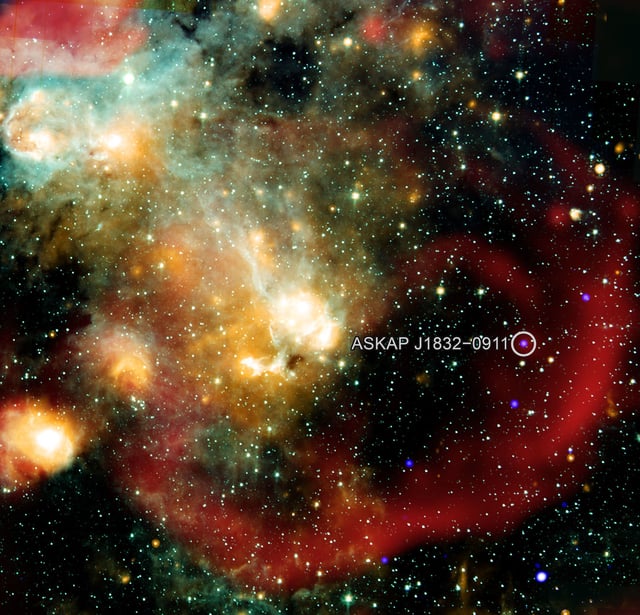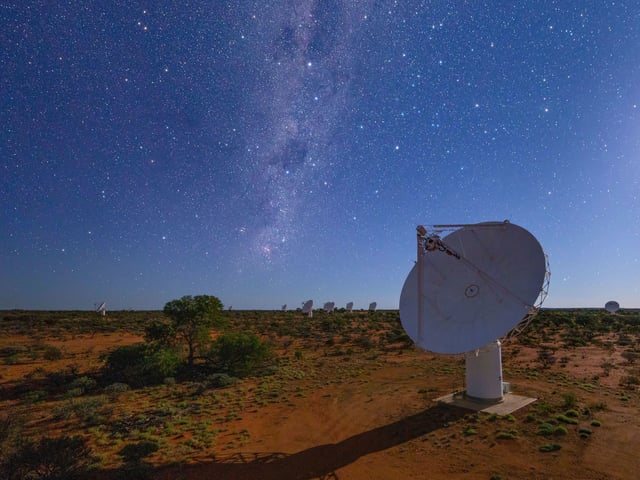Overview
- ASKAP J1832-0911 emits two-minute bursts of radio waves and X-rays every 44 minutes.
- This source lies about 15,000 light-years away in the Milky Way’s dense Galactic Plane.
- Discovery relied on Australia’s ASKAP radio telescope coinciding with NASA’s Chandra X-ray observations.
- The emission intensity dropped by a factor of 1,000 between February and August 2024, revealing dramatic variability.
- Neither magnetar nor white dwarf binary models fully explain the signals, hinting at new physics and a larger population of long-period transients.


